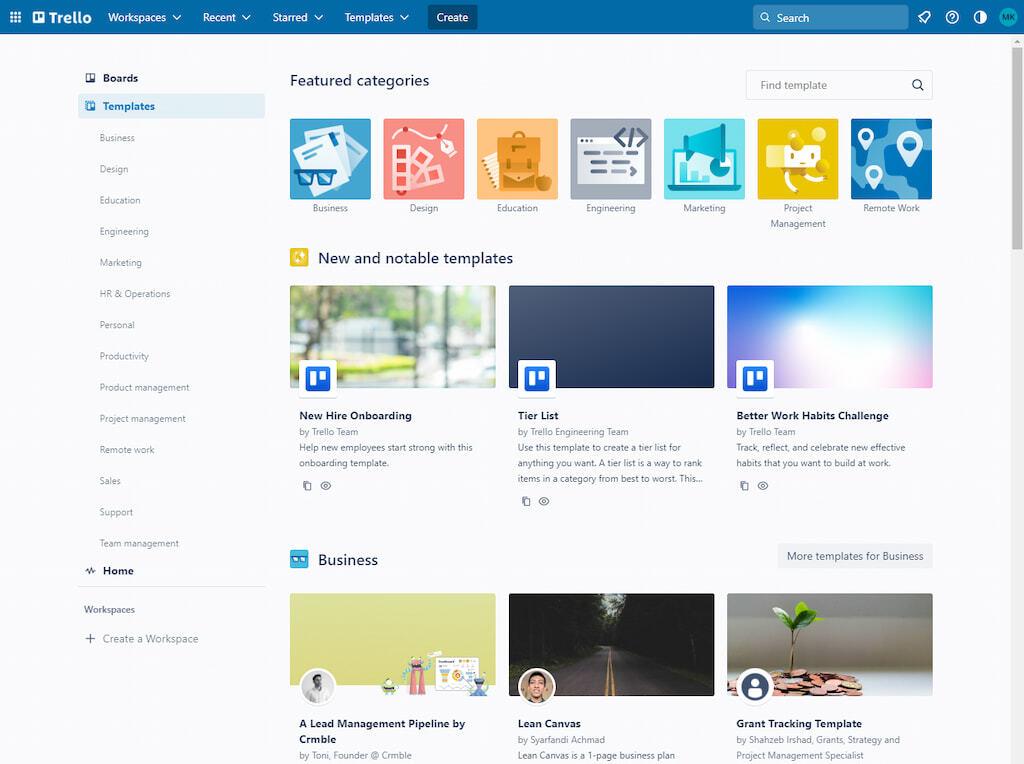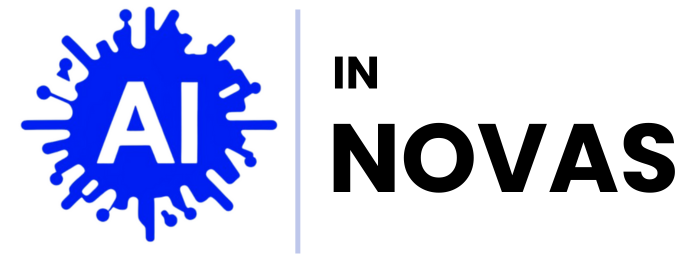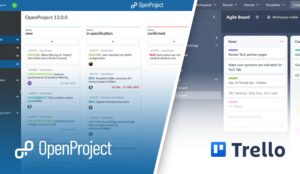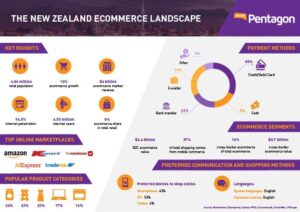In the evolving landscape of project management tools, two contenders have consistently captured the attention of teams striving for efficiency and clarity: Trello and ClickUp. Each platform boasts a unique set of features tailored to enhance organization, streamline workflows, and boost productivity. Trello, with its visually intuitive kanban boards, invites users to engage in a straightforward workflow management experience. On the other hand, ClickUp emerges as a robust all-in-one solution, replete with customizable options designed to adapt to various project needs. In this article, we delve into the intricate details of both tools, exploring their flexibility and versatility to determine which platform best aligns with the diverse demands of modern project management. Whether you’re a seasoned project manager or a team member seeking clarity in collaboration, join us as we dissect the strengths and weaknesses of Trello and ClickUp to find the ultimate fit for your workflow requirements.
Exploring Customization Options in Trello and ClickUp
Both Trello and ClickUp offer a range of customization options, but they do so in different ways that appeal to varying user preferences. Trello’s modular design allows users to create boards that can be tailored to fit their unique workflows. You can customize boards with:
- Labels: Assign different colored labels to tasks for quick visual differentiation.
- Custom Fields: Add specific fields to cards, like due dates or priorities, to make information clearer.
- Backgrounds: Change board backgrounds to personalize your workspace.
- Power-Ups: Integrate various applications and tools to enhance functionality, from calendar views to time tracking.
ClickUp takes customization a step further by offering multiple views and highly configurable dashboards. Users can create a space that fits their needs perfectly by utilizing:
- Custom Views: Toggle between List, Board, Box, and Gantt views to visualize tasks the way you prefer.
- Task Statuses: Define custom statuses beyond the standard to match specific project phases.
- Automations: Set up rules to automate repetitive tasks, thereby increasing efficiency.
- Templates: Utilize or create a variety of templates for projects or workflows to streamline setup.
| Feature | Trello | ClickUp |
|---|---|---|
| Custom Fields | Yes | Comprehensive Options |
| Task Views | Single Board View | Multiple View Types |
| Automations | Limited | Advanced Automation |
| Integrations | Power-Ups | Extensive Integrations |

Task Management Features That Enhance Team Collaboration
Effective task management is vital for fostering collaboration within teams, and both Trello and ClickUp bring distinct features to the table that streamline this process. Trello’s card system allows team members to visualize tasks at a glance, ensuring everyone is on the same page. Collaborators can comment, attach files, and set due dates directly on each card, facilitating seamless communication without cluttering communication channels. Moreover, the integration of Power-Ups enhances functionality, enabling teams to customize their boards according to their unique workflows, ultimately promoting transparency and collective responsibility.
On the other hand, ClickUp takes collaboration a step further with its multiple view options, including lists, boards, and Gantt charts, allowing teams to interact with tasks in a way that best suits their style. The platform supports real-time editing and discussions, allowing team members to brainstorm and make quick decisions within the task interface. Additionally, ClickUp’s Assigned Comments feature specifically highlights feedback on tasks, ensuring that everyone is aware of their responsibilities and deadlines without sifting through lengthy email threads. The table below summarizes the collaboration features of both tools:
| Feature | Trello | ClickUp |
|---|---|---|
| Real-time collaboration | Comments and file attachments | In-line editing and discussions |
| Task visualization | Card system | Multiple views (List, Board, Gantt) |
| Customization options | Power-Ups | Custom templates and fields |

Integrating Productivity Tools: A Comparative Analysis
When comparing Trello and ClickUp, it’s essential to consider how each tool accommodates diverse project management styles. Trello leans heavily on its intuitive card-based interface, allowing users to visualize tasks using customizable boards. This can be particularly beneficial for teams that thrive on agility and adaptability, as they can swiftly rearrange cards to reflect shifting priorities. In contrast, ClickUp offers a more structured approach with a wide array of templates and features that support complex workflows. This means that teams managing more intricate projects may find ClickUp’s flexibility in task creation and categorization more suitable for their needs.
Accessibility across devices and integration capabilities are key differentiators as well. Trello integrates smoothly with applications like Slack, Google Drive, and Dropbox, which enhances team communication and file sharing. On the other hand, ClickUp boasts an extensive list of integrations and customizable automations, facilitating a tailored setup that can significantly improve productivity. Here’s a quick look at how both platforms stack up in terms of integrations and flexibility:
| Feature | Trello | ClickUp |
|---|---|---|
| Visual Interface | Card-based boards | Customizable views |
| Integration Options | Slack, Google Drive | Extensive app list |
| Task Customization | Limited | Highly flexible |
| User Experience | Simple and intuitive | Feature-rich and complex |

User Experience and Accessibility: Which Tool Reigns Supreme?
When comparing project management tools like Trello and ClickUp, user experience and accessibility are paramount factors that can make or break team collaboration. Both platforms offer intuitive interfaces, but they cater to different user preferences. Trello employs a visual, board-based design, allowing users to drag and drop tasks easily, making it highly accessible for those who thrive on visual organization. On the other hand, ClickUp packs robust functionality into its interface, providing a more feature-rich experience that caters to users looking for extensive task management capabilities. This difference is crucial, as some teams may favor a simplified, straightforward approach, while others might appreciate the depth of features offered by ClickUp.
Accessibility also extends beyond the interface, encompassing how tools integrate with other applications and devices. Both Trello and ClickUp are available on various platforms, including web and mobile, ensuring that users can manage projects on the go. Consider the following points when evaluating these two tools:
- Integration options: ClickUp offers integrations with a broader range of applications, streamlining workflows across multiple platforms.
- Keyboard shortcuts: ClickUp provides an extensive list of shortcuts, enhancing productivity for users comfortable with keyboard navigation.
- Mobile accessibility: While both tools have mobile apps, ClickUp’s app offers more features compared to Trello’s, appealing to users who need comprehensive access on their devices.
To Conclude
In the fast-paced world of project management, the tools we choose can either propel us forward or hold us back. As we’ve explored the strengths and nuances of Trello and ClickUp, it’s clear that both platforms bring unique offerings to the table. Trello’s simplicity and visual appeal make it a favorite for those who thrive on a straightforward, card-based approach. On the other hand, ClickUp’s versatility and extensive feature set cater to teams looking for a more comprehensive solution that can adapt to their evolving needs.
Ultimately, the question of flexibility may come down to your team’s specific workflows and objectives. Will you lean towards Trello’s ease of use and charming interface, or embrace the multifaceted capabilities that ClickUp has to offer? As you contemplate your options, remember that the right choice is as much about aligning the tool with your team’s dynamics as it is about the features on display.
In a landscape where adaptability is the name of the game, consider not just what each tool can do, but how they can enhance your collaboration and productivity. Regardless of your choice, may your projects flow smoothly and your teams thrive in their endeavors. Happy organizing!




